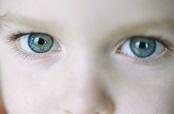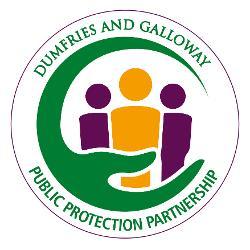What is Child Abuse?
Child abuse is any action by another person, adult or child, that causes significant harm to a child. It can be physical, sexual or emotional, but can just as often be about lack of love, care and attention. We know that neglect, whatever form it takes, can be just as damaging to a child as physical abuse.

Child abuse can affect children and young people of any age and background, and affects both boys and girls.
An abused child often experiences more than one type of abuse, as well as other difficulties in their lives. It often happens over a period of time, rather than being a one-off event, and it can increasingly happens online.
Physical Abuse
Physical abuse is the causing of physical harm to a child or young person. Physical harm may involve hitting, shaking, throwing, poisoning, burning or scalding, drowning, suffocating, or otherwise causing physical harm to a child
Physical harm may also be caused when a parent or carer fabricates the symptoms of, or deliberately causes illness in a child.
Bullying
Bullying is behaviour that hurts someone else - such as name calling, hitting, pushing, spreading rumours, threatening or undermining someone. It can happen anywhere, at school, at home or online. It's usually repeated over a long period of time and can hurt a child both physically and emotionally.
Bullying that happens online, using social networks, games and mobile phones, is often called cyberbullying. A child can feel like there's no escape because it can happen wherever they are, at any time of day or night.
It can be hard for adults, including parents, to know whether or not a child is being bullied. A child might not tell anyone because they're scared the bullying will get worse. They might think that they deserve to be bullied, or that it's their fault.
Sexual Abuse
Sexual abuse is any act that involves the child in any activity for the sexual gratification of another person, whether or not it is claimed that the child either consented or agreed. Sexual abuse involves forcing or enticing a child to take part in sexual activities, whether or not the child is aware of what is happening.
The activities may involve physical contact, or non-contact activities.
Contact activities:
- Assault by penetration (e.g. rape or oral sex)
- Non-penetrative acts such as masturbation, kissing, rubbing and touching outside of clothing.
Non-contact activities :
- Involving children in looking at, in the production of or distribution of sexual images
- Watching sexual activities
- Encouraging children to behave in sexually inappropriate ways
- Grooming a child in preparation for abuse (including via the internet)
Sexual abuse is not solely perpetrated by adult males. Women can also commit acts of sexual abuse, as can other children.
A new resource called Upstream has been developed by charity 'Stop It Now!' Scotland, with support from the Scottish Government. The Upstream Prevention pack is designed to offer advice and support, to enable care professionals and members of the public to prevent child sexual abuse when they suspect that a child is vulnerable. It offers the tools to learn about, identify, prevent, and act upon child sexual abuse.
Stop it now - Upstream Prevention Pack (PDF, 200 KB) Scotland Upstream Cyber Booklet (PDF, 2 MB)
Neglect
Neglect is the persistent failure to meet a child's basic physical and/or psychological needs, likely to result in the serious impairment of the child's health or development. Neglect may occur during pregnancy as a result of maternal substance abuse.
Once a child is born, neglect may involve a parent or carer failing to:
- Provide adequate food, clothing and shelter (including exclusion from home or abandonment)
- Protect a child from physical and emotional harm or danger
- Ensure adequate supervision (including the use of inadequate care-givers)
- Ensure access to appropriate medical care or treatment.
It may also include neglect of, or unresponsiveness to a child's basic emotional needs.
Emotional Abuse
Emotional abuse is the persistent emotional maltreatment of a child such as to cause severe and persistent adverse effects on the child's emotional development. It may involve conveying to children that they are worthless and unloved, inadequate, or valued only insofar as they meet the needs of another person.
It may feature age or developmentally inappropriate expectations being imposed on children. These may include interactions that are beyond the child's developmental capability, as well as overprotection and limitation or exploration and learning, or preventing the child participation in normal social interaction.
It may include not giving the child opportunities to express their views, deliberately silencing them or 'making fun' of what they say or how they communicate. It may involve seeing or hearing the ill-treatment of another. It also may involve serious bullying (including cyberbullying), causing children frequently to feel frightened or in danger, or the exploitation or corruption of children.
Other forms of abuse include Child Sexual Exploitation (link to CSE General Info page), and Radicalisation. You can find more information on all types of abuse with some signs and indicators.
Warning signs
You might notice that a child or young person:
- Has unexplained bruising
- Seems quiet or withdrawn or afraid to go home
- Appears constantly hungry, tired or untidy
- Is left unsupervised or has too much responsibility for their age
- Acts in a sexually inappropriate way or misuses drugs or alcohol
- Tells you something that worries you.




